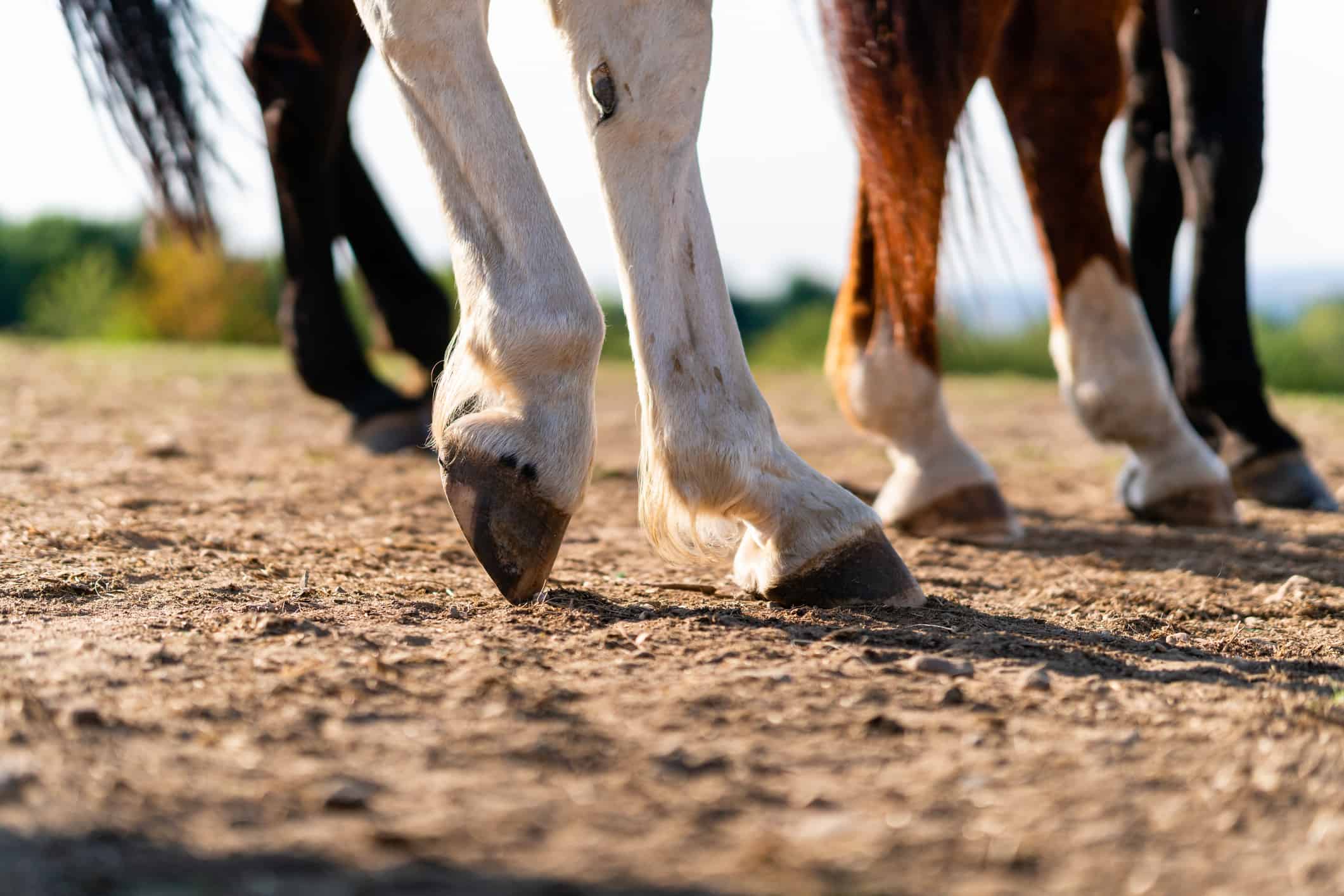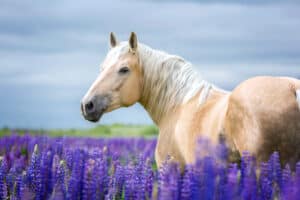Often called “night eyes,” a horse’s leg chestnut might seem unimportant now but it had a purpose years ago. Each one is unique, like a thumbprint, and grows continuously like fingernails. The only difference is that chestnuts on an equine’s leg shed naturally, without the need for trimming. Eager to learn more about the purpose of this often-forgotten evolutionary modification? Let’s jump in!
What Are Chestnuts on a Horse Leg

You can spot a horse’s chestnuts on the inside of their legs. These calloused pads aren’t painful, but they also don’t serve a functional purpose (anymore).
©Sebastian Frank/iStock via Getty Images
When you pick your horse’s hooves or wrap their legs, you might have noticed the hard, callous pads on the inside of their legs. Those are a horse’s leg chestnuts! They are made of keratinized skin and are present on the inside of a horse’s front and hind limbs (above the knee and below the hock, respectively).
Where Did Chestnuts Come From
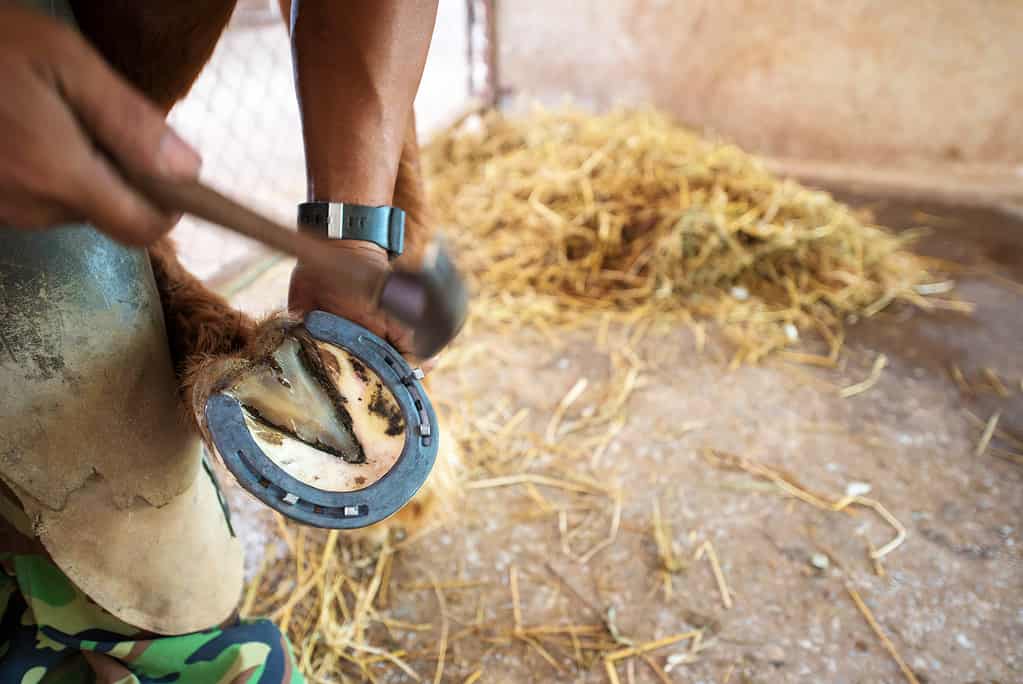
Chestnuts used to be foot pads but, over time, these were lost to evolution as equine legs lengthened.
©10174593_258/ via Getty Images
Chestnuts are remnants of toes that horses lost due to evolution. Over time, their legs lengthened and their toes became one hoof (per leg). Instead of completely disappearing, they became benign callouses that still exist in almost all horse breeds. Now, their foot pads are within the hoof, which is called the frog.
The Purpose of a Horse’s Leg Chestnut
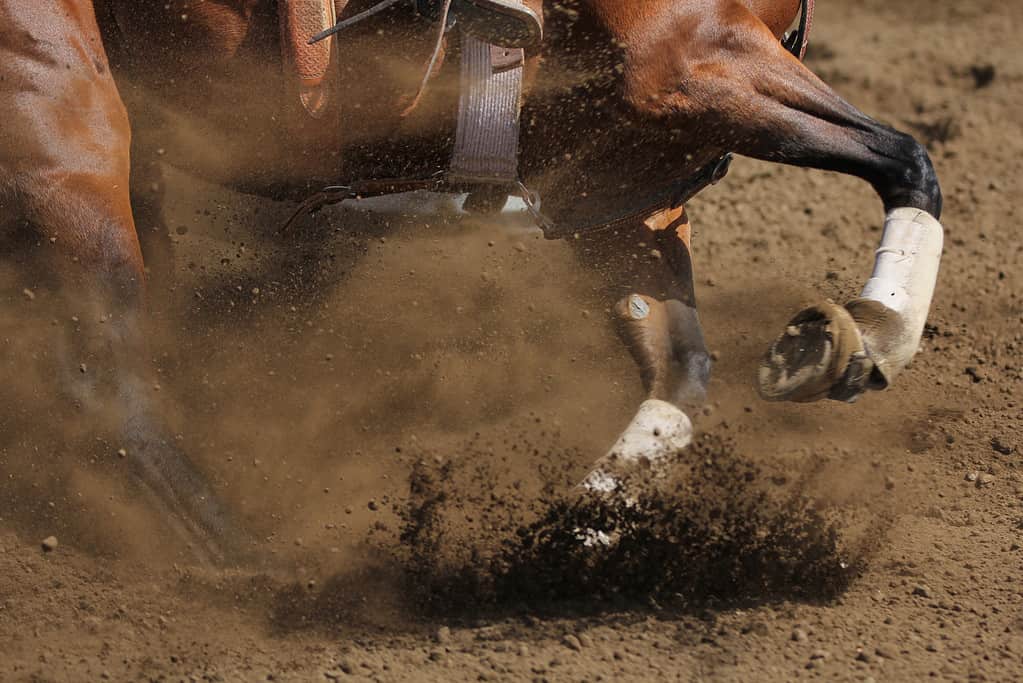
A horse running barrels shows off the chestnut on the inside of their leg.
©customphotographydesigns/iStock via Getty Images
Now that you know what a chestnut is, let’s uncover the purpose of these harmless pads… in both the past and the present.
It Used to be What Horses Walked on
Before they became aesthetic, the pads on horses’ legs were functional! This is where the Eohippus’ toes were until evolution resulted in longer limbs and a loss of the foot pads.
It Used to Help Cowboys Befriend Wild Horses
Because chestnuts have a distinct smell, some cowboys out West would keep a trimmed-off section in their pocket when working with wild horses. This was thought to attract the horses and make them easier to tame.
It Is Used as an Identifying Mark
The Fédération Équestre Internationale (FEI) considers a horse’s leg chestnut an identifying mark. The placement and size of the pads are unique to each horse and are a way to identify them.
It Is Used as a Scratching Post
Horses get itchy. While their leg chestnuts weren’t designed to be an always-accessible scratching post, they work as one! Since chestnuts are essentially hard callouses, it doesn’t hurt at all when they rub their face on them.
Conclusion
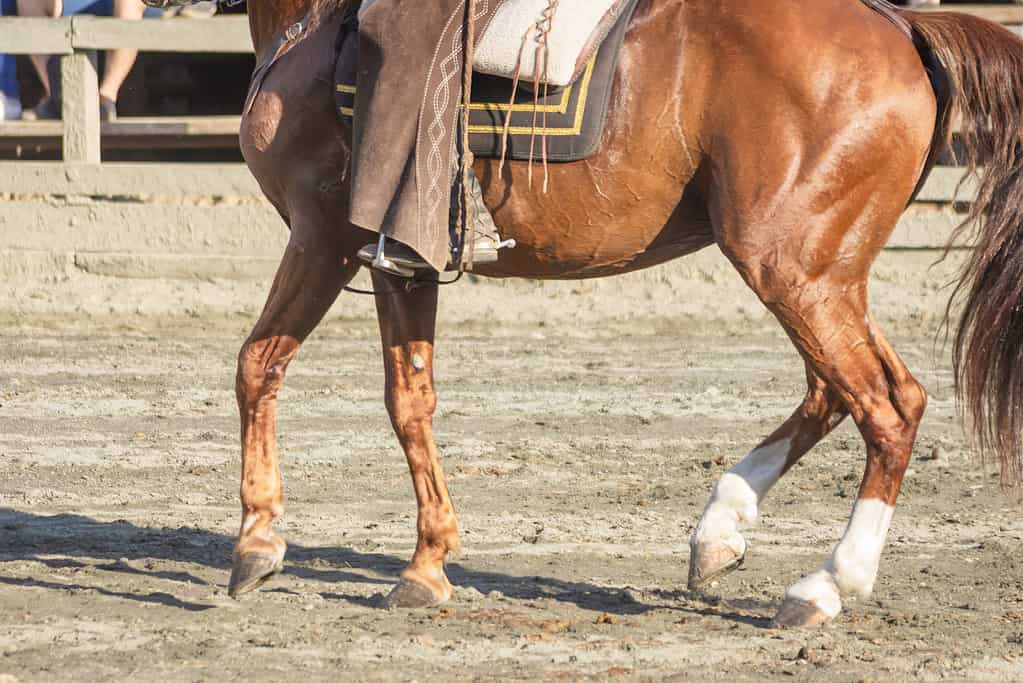
Horses have evolved to be quite a bit different than their ancient ancestors.
©Canas Arango/iStock via Getty Images
It can be hard to find information on a horse’s night eyes. The exact origin is shrouded in mystery and research often shows details about the toxic horse chestnut plant rather than the calloused spots on an equine’s leg. We hope this blog was educational and that you enjoyed learning more about the purpose of the pads that have truly withstood the test of time!
FAQs
Are the Chestnuts on a Horse’s Leg Painful?
No, they do not feel the chestnuts on their legs. Horses don’t feel any pain when you touch or trim the chestnuts either, as long as you know how to do it properly.
Can You Trim Chestnuts Off a Horse’s Leg?
Yes, you can trim a horse’s leg chestnuts, but you don’t need to since it sheds naturally. You might want to trim before a competition, but your farrier can do this when they come by for routine hoof trims. However, you don’t want to remove the chestnuts altogether! They might not serve a functional purpose anymore, but they are still a part of a horse’s anatomy.
How Do You Get Rid of Chestnuts on a Horse’s Legs?
Even if you wanted to get rid of it, there’s no way to remove a chestnut completely — it will just grow back! It is possible to trim or cut off pieces of it though.
Is a Horse Chestnut the Same as a Horse’s Leg Chestnut?
No. A horse chestnut is a toxic plant. It is NOT safe for humans or dogs to eat a horse chestnut. It IS safe to consume the chestnuts on a horse… it just might not taste good.
Can You Eat a Horse’s Leg Chestnut?
An equine’s leg chestnut is safe for dogs to eat in moderation. Some dogs are drawn to the specific odor of them, but will only eat it if you shave it off first.
Do All Horses Have Chestnuts?
Most breeds have chestnuts on all four legs. The exceptions are the Banker Horse, Caspian Pony, and Icelandic Horse! Also, draft horses often have larger chestnuts than smaller breeds.
Isn’t Chestnut a Horse Coloring?
Yes, “chestnut” refers to both the color of a horse and the callous pads on the inside of their legs.
Thank you for reading! Have some feedback for us? Contact the AZ Animals editorial team.

